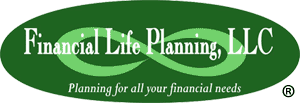
Small Business Retirement Plan Guide
2025 Edition
A comprehensive resource for small business owners
Introduction
Small business owners face unique challenges when establishing retirement plans for themselves and their employees. Fortunately, there are several retirement plan options available, each with different features, contribution limits, and administrative requirements.
This guide provides an overview of the five primary retirement plan options for small businesses:
- Simplified Employee Pension (SEP) IRAs - Easy to establish with minimal administrative requirements
- SIMPLE IRAs - Designed specifically for small employers with straightforward administration
- 401(k) Plans - Flexible plans with higher contribution limits and customizable features
- Profit-Sharing Plans - Discretionary employer contributions based on company performance
- Defined Benefit Plans - Traditional pension plans providing fixed retirement benefits
Understanding the differences between these plans will help you select the option that best aligns with your business goals, employee needs, and administrative capabilities. Each plan has unique advantages, costs, and compliance requirements that should be carefully considered before implementation.
Simplified Employee Pension (SEP)
A SEP allows you to establish a type of IRA for yourself and each of your employees. You contribute a uniform percentage of pay for each employee, although you aren’t required to make contributions every year. SEPs have minimal administrative requirements and can be established using a simple form. As a small business owner, you have the flexibility to adjust contributions based on business conditions.
Key Advantages
- Easy to set up and maintain
- Low administrative costs
- Flexibility in annual contributions
Plan Details
FEATURE | DESCRIPTION |
|---|---|
Employer Eligibility | Any employer with one or more employees including sole proprietors, partnerships, corporations and S corporations |
Employer’s Role | Set up plan by completing IRS Form 5305-SEP; No annual filing requirements |
Contributors | Employer contributions only; 100% tax-deductible |
Deadline to Establish | By due date of tax return (including extensions) |
Contribution Deadline | Due date of tax return (including extensions) |
Maximum Annual Contribution | Up to 25% of W-2 wages or 20% of net adjusted self-employment income for a maximum of $70,000 in 2025 |
Contribution Requirements | Employer can decide whether to make contributions year-to-year |
Employee Coverage | Must be offered to all employees who are at least 21 years of age, were employed by the employer for 3 of the last 5 years and earned income of more than $750 |
Safe Harbor Rules | No specific safe harbor provisions; contributions must be made equally for all eligible employees based on the same percentage of compensation |
Approximate Costs | Setup: $0-$50 per participant Annual maintenance: $0-$25 per participant No filing fees or administration costs |
Vesting | Contributions are immediately 100% vested |
Loans | Not allowed |
Withdrawals | Permitted anytime subject to federal income taxes; early withdrawals subject to tax penalty |
Financial Context: SEP IRAs are particularly attractive for self-employed individuals or business owners with few or no employees who want to maximize their retirement contributions. The substantial $70,000 contribution limit makes this an excellent vehicle for high-income business owners in profitable years.
SIMPLE IRA
SIMPLE (Savings Incentive Match Plans for Employees) plans are designed specifically for small employers. They are easy to establish and inexpensive to administer. Your employer contributions can be structured in one of two ways: either match employee contributions dollar for dollar up to 3% of compensation, or make a fixed contribution of 2% of compensation for all eligible employees.
Key Advantages
- Tax credit available for new plans ($500/year for first 3 years)
- Easy setup and administration
- Lower administrative costs than 401(k) plans
Plan Details
FEATURE | DESCRIPTION |
|---|---|
Employer Eligibility | Any employer with 100 or fewer employees that does not currently maintain another retirement plan |
Employer’s Role | Complete IRS Form 5304-SIMPLE or 5305-SIMPLE; minimal annual filing requirements |
Contributors | Both employee salary deferrals and employer contributions |
Deadline to Establish | Generally by October 1 of the year |
Contribution Deadline | Employee deferrals within 30 days after month end; employer contributions by tax filing deadline including extensions |
Maximum Annual Contribution (2025) | Employee: Up to $16,500 ($20,000 if age 50+; $21,750 if age 60-63) |
Contribution Requirements | Employee can decide how much to contribute; Employer must make matching contributions or contribute 2% of compensation |
Employee Coverage | Must be offered to all employees who have earned at least $5,000 in any prior 2 years and are reasonably expected to earn at least $5,000 in the current year |
Safe Harbor Rules | SIMPLE IRAs are inherently safe harbor plans; employer must either match 100% of employee contributions up to 3% of compensation or make a 2% non-elective contribution for all eligible employees |
Approximate Costs | Setup: $0-$50 per participant |
Vesting | Employer and employee contributions are immediately 100% vested |
Loans | Not allowed |
Withdrawals | Permitted anytime, but 25% penalty if withdrawal occurs within 2 years of participation (in addition to regular early withdrawal penalties) |
Financial Context: SIMPLE IRAs are ideal for small businesses seeking an easy-to-administer retirement plan with lower contribution limits than SEPs or 401(k)s. The mandatory employer contribution creates a strong incentive for employee participation, making it an excellent employee benefit that can help with retention.
401(k) Plans
401(k) plans - both traditional and Roth - have become widely accepted retirement savings vehicles for businesses of all sizes. While they can be more complex than SEP or SIMPLE plans, many financial institutions offer prototype 401(k) plans that significantly reduce administrative burden.
Key Advantages
- Higher employee contribution limits than SIMPLE IRAs
- Roth option available
- Loan provisions possible
- Flexible plan design options
Plan Details
FEATURE | DESCRIPTION |
|---|---|
Employer Eligibility | Any employer with one or more employees |
Employer’s Role | No model form available; Annual filing of Form 5500 required; May require nondiscrimination testing |
Contributors | Employee salary deferrals and/or employer contributions |
Maximum Annual Contribution (2025) | Employee: $23,500 ($31,000 for participants 50+) |
Contributor’s Options | Employee can elect contribution amount; Employer can make additional or matching contributions according to plan terms |
Employee Coverage | Generally must be offered to all employees at least 21 years of age who have completed a year of service |
Safe Harbor Rules | Safe harbor 401(k) plans exempt from ADP/ACP testing by providing either: (1) 3% non-elective contribution for all eligible employees; (2) matching contribution of 100% of first 3% of compensation plus 50% of next 2%; or (3) QACA match of 100% of first 1% plus 50% of next 5% with auto-enrollment |
Approximate Costs | Setup: $1,000-$3,000 |
Vesting | Employee deferrals 100% vested immediately; Employer contributions may vest over time according to plan terms |
Vesting | Employee deferrals 100% vested immediately; Employer contributions may vest over time according to plan terms |
Withdrawals | Permitted after specified events (retirement, separation, etc.); Early withdrawals subject to tax penalty |
Financial Context: 401(k) plans offer the most flexibility and highest contribution limits, making them ideal for businesses that want to offer competitive benefits. For business owners looking to maximize personal contributions while providing employees with retirement options, 401(k) plans provide significant advantages despite higher administrative requirements.
Profit-Sharing Plans
Your contributions as an employer to a profit-sharing plan are discretionary. Depending on the plan terms, there is often no set amount that an employer needs to contribute each year. Like 401(k) plans, profit-sharing plans can vary in complexity, and prototype plans offered by financial institutions can reduce administrative requirements.
Key Advantages
- Flexible annual employer contributions
- Can be combined with a 401(k) plan
- Allows different contribution formulas for different employee groups
Plan Details
FEATURE | DESCRIPTION |
|---|---|
Employer Eligibility | Any employer with one or more employees |
Employer’s Role | No model form available; Annual filing of Form 5500 required |
Contributors | Annual employer contribution is discretionary |
Deadline to Establish | By year end (generally Dec. 31) |
Contribution Deadline | Due date of tax return, including extensions |
Maximum Annual Contribution | The lesser of 100% of compensation or $70,000 in 2025; Employer can deduct amounts up to 25% of aggregate compensation for all participants |
Contributor’s Options | Employer makes contribution as set by plan terms |
Employee Coverage | Generally must be offered to all employees at least 21 years of age who worked at least 1,000 hours in a previous year |
Safe Harbor Rules | No specific safe harbor provisions; must satisfy coverage and non-discrimination testing; contributions can be allocated using various formulas (pro-rata, integrated with Social Security, new comparability) |
Approximate Costs | Setup: $1,000-$3,000 |
Vesting | Employer contributions may vest over time according to plan terms (typically 5-year cliff or 3-7 year graded vesting) |
Participant Loans | Plan may permit loans |
Withdrawals | Permitted after specified events (e.g., retirement, plan termination); Early withdrawals subject to tax penalty |
Financial Context: Profit-sharing plans are particularly beneficial for businesses with variable profits who want to reward employees in good years without committing to annual contributions. They can be designed to reward specific groups of employees (such as management) while still meeting non-discrimination requirements.
Defined Benefit Plans
Defined benefit plans provide a fixed, pre-established benefit for employees. This traditional type of pension plan is often valued highly by employees and may provide greater retirement benefits than other plan types. However, these plans are more complex and costlier to establish and maintain.
Key Advantages
- Provides predictable retirement benefits
- Allows higher tax-deductible contributions for older employees
- May allow participants to accumulate benefits more rapidly than under other plan types
Plan Details
FEATURE | DESCRIPTION |
|---|---|
Employer Eligibility | Any employer with one or more employees |
Employer’s Role | No model form available; Annual filing of Form 5500 required; Actuarial determination of contributions |
Contributors | Primarily funded by employer |
Maximum Annual Contribution | Actuarially determined |
Maximum Annual Benefit | The maximum annual benefit at retirement is the lesser of $280,000 or 100% of final average pay (2025) |
Contributor’s Options | Employer generally required to make contribution as set by plan terms |
Employee Coverage | Generally must be offered to all employees at least 21 years of age who worked at least 1,000 hours in a previous year |
Safe Harbor Rules | No specific safe harbor provisions; must satisfy minimum participation, coverage, and non-discrimination requirements; may be subject to Pension Benefit Guaranty Corporation (PBGC) requirements |
Approximate Costs | Setup: $3,000-$5,000 |
Vesting | Rights to benefits may vest over time according to plan terms |
Participant Loans | Plan may permit loans |
Withdrawals | Payment of benefits after specified events (e.g., retirement, plan termination); Early withdrawals subject to penalty |
Financial Context: Defined benefit plans are particularly valuable for small business owners nearing retirement who want to accelerate retirement savings. These plans can allow significantly higher contributions than other plan types, especially for older participants.
Choosing the Right Plan
When selecting a retirement plan for your small business, consider:
- Your Business Size and Growth Plans: Smaller businesses may prefer the simplicity of SEP or SIMPLE plans, while larger or growing businesses might benefit from the flexibility of 401(k) plans.
- Contribution Goals: Consider how much you want to contribute for yourself and your employees.
- Administrative Capacity: SEP and SIMPLE plans require minimal administration, while 401(k) and defined benefit plans require more oversight.
- Employee Demographics: The age and compensation of your workforce may influence which plan provides the most benefits.
- Budget Flexibility: If your business has variable income, consider plans with discretionary contributions like SEPs or profit-sharing plans.
For a personalized assessment of which retirement plan best suits your business needs, contact us for a consultation.
About Financial Life Planning, LLC
At Financial Life Planning, LLC, we help small businesses establish effective retirement plans that benefit both the business and its employees. Our approach ensures that your retirement strategy aligns with your overall business and personal financial goals.
Contact Information
Edward Goldstein, CFP, President
Financial Life Planning, LLC
10,000 Lincoln Drive East, Ste 201
Marlton, NJ 08053
Phone: 856-988-5480
eFax: 908-292-1040
Email: egoldstein@flplanning.net
Website: www.flplanning.net
This guide is for informational purposes only and does not constitute legal or tax advice.

